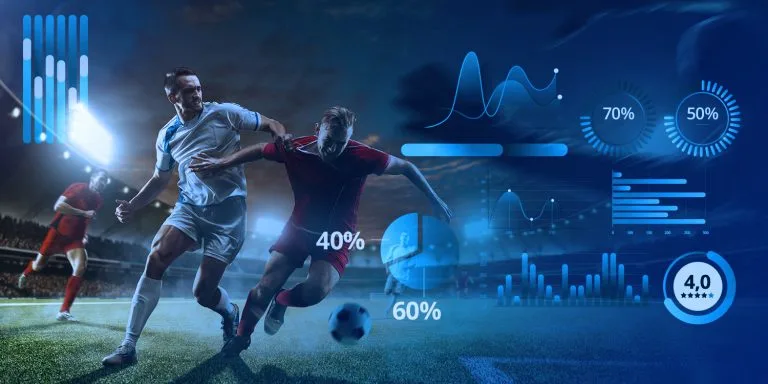The use of data analytics in sports is revolutionizing the way teams operate and make decisions. By analyzing large amounts of data, teams are able to gain a competitive edge and improve performance on the field. The application of data analytics in sports ranges from player performance evaluation, game strategy, injury prevention, fan engagement and marketing.
Player performance evaluation is one of the main ways that teams are using data analytics. By analyzing data such as player statistics, teams are able to identify strengths and weaknesses, and make more informed decisions about player selection and development. Teams can use data to compare players within their own team or across different teams, and identify which players are most effective in certain positions or situations. Teams can also use data to monitor player progress over time and identify areas where they need to improve.
Another way that teams are using data analytics is in game strategy. By analyzing data such as team and player statistics, teams are able to identify patterns and trends that can inform game strategy. For example, teams can use data to determine which plays are most effective in different situations or against different opponents. Data analytics can also be used to analyze the performance of specific players or teams, which can help teams identify areas of weakness and develop strategies to exploit them.
Injury prevention is another area where data analytics is being used in sports. Teams are able to use data from wearables and other sensors to monitor players’ health and fitness, identify potential injury risks, and take proactive steps to prevent injuries from occurring. By analyzing data such as player movement, teams can identify patterns that indicate an increased risk of injury, such as overuse or fatigue. This allows teams to take preventative measures, such as adjusting training schedules or implementing rest days, which can help to reduce the risk of injury.
Data analytics is also being used in fan engagement and marketing. Teams are able to use data from social media, ticket sales, and other sources to better understand their fans and create more effective marketing campaigns. By analyzing data such as fan demographics, teams can identify which types of content and campaigns are most effective in reaching and engaging with different types of fans. Teams can also use data to better understand the preferences and behaviors of their fans, which can help them create more personalized and effective marketing campaigns.
However, as with any new technology, there are also concerns about the use of data analytics in sports. One of the main concerns is the potential for errors and bias in the data and the analysis. For example, if a team only collects data on certain players or teams, they may not have a complete picture of performance, which can lead to flawed conclusions. Additionally, there are also concerns about the potential for data analytics to be used in ways that are harmful or unethical, such as by exploiting players or manipulating the outcome of games.
Another concern is the potential for data breaches and privacy violations. With the increasing amount of data being collected and stored, the risk of data breaches and the potential for sensitive information to fall into the wrong hands is also increasing. Teams and organizations need to ensure that they have proper security measures in place to protect the data they collect and store.
In conclusion, the use of data analytics in sports has the potential to revolutionize the way teams operate. By analyzing large amounts of data, teams are able to gain a competitive edge and improve their performance on the field. However, it’s important to also consider the potential downsides and ensure that the technology is used ethically and responsibly. Teams and organizations need to be aware of the potential errors and biases in data and analysis, as well as the potential for misuse and abuse of the data. They must also ensure that proper security measures are in place to protect the data they collect and store.

As data analytics technology continues to evolve, teams and organizations will need to stay up to date with the latest developments and tools. This will allow them to take full advantage of the benefits of data analytics, while also minimizing the potential risks and downsides. Furthermore, teams and organizations will need to invest in the necessary infrastructure and resources to support data analytics, such as data storage and processing capabilities, and skilled personnel to manage and analyze the data.
In addition, teams and organizations will also need to consider the ethical and legal implications of data analytics. They will need to ensure that they are complying with all relevant laws and regulations, such as data protection and privacy laws and regulations.
United States: 5 interesting historical things.

[…] The Use of Data Analytics in Sports: How Teams are Using Big Data to Improve Performance […]